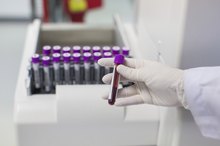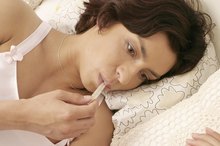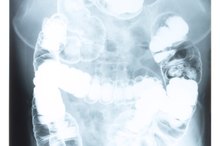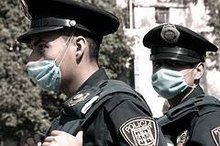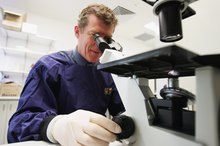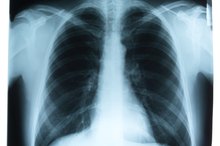What does fact checked mean?
At Healthfully, we strive to deliver objective content that is accurate and up-to-date. Our team periodically reviews articles in order to ensure content quality. The sources cited below consist of evidence from peer-reviewed journals, prominent medical organizations, academic associations, and government data.
The information contained on this site is for informational purposes only, and should not be used as a substitute for the advice of a professional health care provider. Please check with the appropriate physician regarding health questions and concerns. Although we strive to deliver accurate and up-to-date information, no guarantee to that effect is made.
What Is the Chain of Infection for Tuberculosis?
Tuberculosis is a disease caused by Mycobacterium tuberculosis. Although TB is thought of as a lung disease, it can attack other parts of the body such as the spine, kidney and brain. Left untreated, TB can be fatal. It is spread through droplets in the air when an infected person coughs, sneezes or talks. Once considered eradicated, TB is making a comeback, with stronger and more antibiotic-resistant strains. The chain of infection for TB has six links 1.
If you are experiencing serious medical symptoms, seek emergency treatment immediately.
Etiologic Agent
The etiologic agent is any microorganism that causes infection. For TB, it's Mycobacterium tuberculosis. The better its ability to grow, invade tissue, and cause disease, the greater the possibility of the bacterium causing an infection.
Reservoir
5 Classifications of Pulmonary Tuberculosis
Learn More
The reservoir of infection might be human, animal or objects such as countertops and doorknobs. This gives the microorganism a place to thrive and reproduce. The only reservoir for TB is the human.
Portal of Exit
This is where the microorgansim leaves the reservoir. TB's portal of exit is via the mouth and nose. When someone with TB sneezes or coughs, they release large numbers of the TB microbacterium.
Mode of Transmission
List of Pandemic Diseases
Learn More
The mode of transportation is how the bacterium moves from one place to another. Many bacterium are transported by unwashed hands that transmit the bacterium to other surfaces. With TB, however, the mode of transmission is the cough or sneeze that releases TB bacterium into the air. It can then be inhaled by another person in the room.
- The mode of transportation is how the bacterium moves from one place to another.
- With TB, however, the mode of transmission is the cough or sneeze that releases TB bacterium into the air.
Portal of Entry
Many portals of entry exist for microorganisms, including breaks in the skin, mucus membranes (the nose and mouth) and orifices in the body. TB's portal of entry is also its portal of exit--the human respiratory system. Just as the TB bacterium can be expelled by sneezing, it can be inhaled by the nose and mouth.
Susceptible Host
Microorganisms look for a host who can easily be invaded, such as someone who is already sick or has a low immune system. An older person with HIV or AIDS will have a much harder time surviving TB than a young, healthy 25-year-old.
TB Facts
According to the World Health Organization, one-third of the world is infected with the TB bacterium. Most cases of TB in the world occur in Africa and southeast Asia. Untreated, each person with TB can infect 10 to 15 people each year. Treating TB is no fast and easy fix 1. Many months of antibiotics such as Rifampin and other drugs is be needed. In hospitals, the patient is placed on droplet precautions and all who enter the room must wear an approved TB mask. It is vital to take the full course of antibiotics to prevent new, stronger strains of drug-resistant TB to emerge.
- According to the World Health Organization, one-third of the world is infected with the TB bacterium.
- Untreated, each person with TB can infect 10 to 15 people each year.
Related Articles
References
Writer Bio
Roma Lightsey has written for "Grit," "Arthritis Today," and "The Clinical Advisor," a journal for nurse practitioners. Lightsey holds a Bachelor of Arts in communications, a Bachelor of Science in nursing, and a Masters of Science in nursing. She currently teaches nursing and works for a medical device company when not busy writing.
